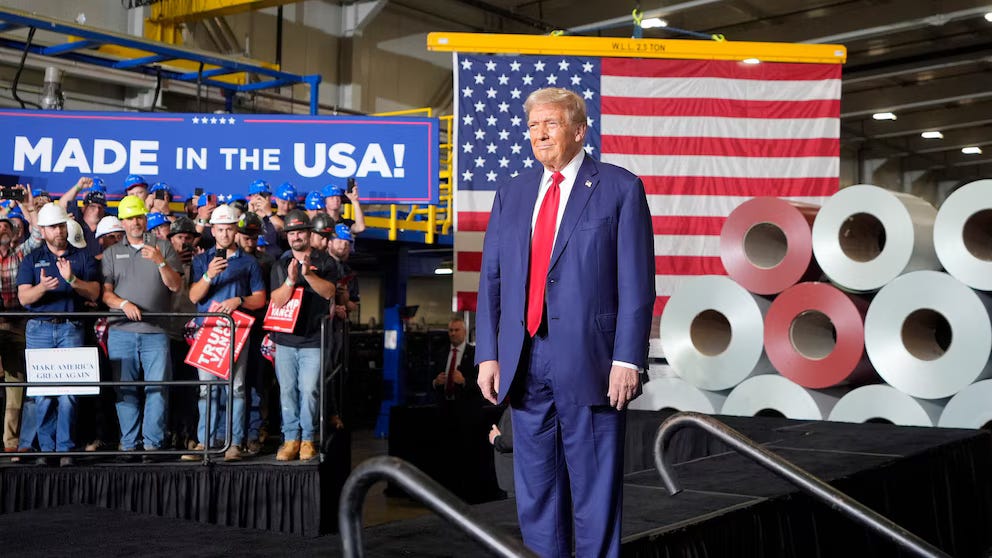A MANUFACTURING SUPERPOWER WITHOUT MIGRANTS…HOW DOES THAT WORK?
Whatever details eventually emerge about the Trump Administration’s tariff policies—-and how many of those eventually take effect—-the intention behind them is clear: Build a “manufacturing superpower”. And do that with much more restricted immigration to the US.
As Commerce Secretary Howard Lutnick put it on Inauguration Day, “If those (manufacturing) companies don’t want to pay (tariffs), there is only one thing they can do: Build their factories in America, hire Americans with great high-paying jobs.” So, all that’s needed, then, are working Americans to respond to the policy requirement.
Problem: Even if manufacturers had confidence in the stability of new, tariff-enforced demand for their products, will the workforce exist to staff the new factories? A native-born workforce, that is, given stricter limits on migration? Probably not.
Immigration ‘restrictionists’ close to the Trump Administration are aware of this. Steven Camarota, of the Center for Immigration Studies, an immigration-restrictionist think tank, recently wrote “Since January 2020, 88 percent of employment growth went to immigrants.” Of particular concern, he believes, “bringing in so many legal and illegal immigrants reduce job prospects for American men.”
Right now there is substantial support, even a popular majority, for the Trump Administration’s immigration restriction policies. Some of that support, particularly among Republicans, is based on concerns about the cultural effects of immigration as well as belief that restrictions will lead to more economic opportunity for native-born Americans.
Only there will be fewer native-born Americans to enter the workforce in the very near future. The voters’ perception that there was a surge in both legal and legal immigration in the Biden years was correct. But the immigration crackdown had already started in the last year of the Democratic Administration, which might account for the relative slowdown in deportations since Inauguration Day.
Migrants, legal and illegal, had already been discouraged by the new atmosphere. What the US Border Patrol calls “migrant encounters” at the southern border declined by 77% between December 2023 and October 2024.




